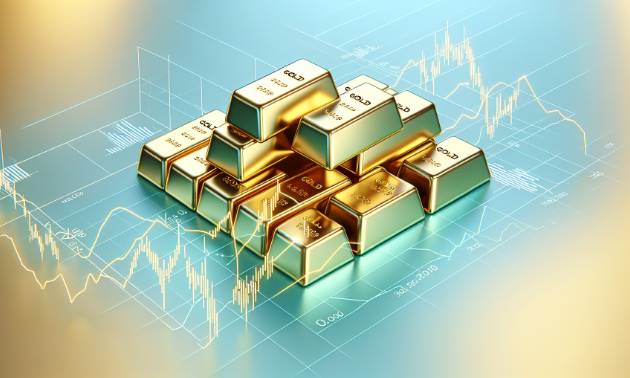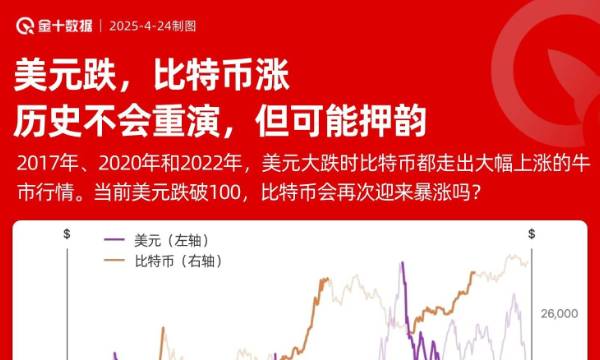On Wednesday, gold suffered its biggest single-day decline in nearly four years as the Trump administration appeared to have a more modest attitude towards trade policy, sparking doubts about the continued potential of its strong gains.
The precious metal has risen sharply this year, reaching a high of more than $3,500 per ounce this week, and then its price support seems to suddenly disappear.
This raises questions about whether gold has risen to its limit. Analysts said it may be true and there is room for further price declines - but they added thatThe sudden stop of this round of upsurge does not mean that the price of gold has peaked.
"There is no sign that $3,500 is the top of gold. The trend is still upward and we are now experiencing a normal pullback in the bull market."
However, he told MarketWatch,In the short term, gold prices may fall again "around $100"。
Jonathan Krinsky, chief market technology analyst at BTIG, pointed out in a Tuesday note that gold prices are 27% higher than its 200-day moving average, a level that has only been seen a few times in the past 30 years.
Klinsky thinks it isA signal that gold enters the "Blow Off Top" stage. In trading terms, "top-top" refers to a situation where the asset price has a sharp rise, accelerated rise, and may subsequently fall sharply.
Klinsky said that the current downward risk of gold is very high. He said when gold prices are more than 25% above its 200-day moving average,Its price will always test the 200-day moving average over the next three to six months.
"Parabolic ups are rare in the market, and history shows that this rise may be the final stage of a mature bull market," said Jim Wyckoff, senior analyst at Kitco.com.
He believes that from a time perspective, the gold market is "close to the climax, but not necessarily so from a price perspective." Gold prices are still likely to "raise sharply in the coming days", butLarger single-day price fluctuations "show that there is not much time left for this very mature bull market", Wikov said.
He added that at present, if the price of gold futures contracts in June falls below $3,200, it will "make greater damage to the chart trend."
A pillar of gold's rise is shaken
Changes in the context of the global trade war are one of the reasons for the decline in gold prices.
"Gold has been heavily dependent on the pillar of the trade war, and now it is starting to shake," said Stephen Innes, managing partner at SPI Asset Management.
The White House is considering sharply cutting tariffs on Chinese imports, according to the Wall Street Journal, citing people familiar with the matter on Wednesday.
Brien Lundin, editor of Gold Newsletter, said he had predicted that easing trade tensions could trigger a gold price correction, and now it seems that coupled with Trump's pressure on Fed Chairman Jerome Powell "has worked."
Meanwhile, Innis of SPI Asset Management said the "quarrel" between Trump and Powell was just a "gimmick of headlines." He saidThis is purely a "hype rise", and the popularity of this hype is rapidly fading.“We see the market returning to normal, and at the same time, the parabolic rise of gold has been curbed.”
Later on Tuesday, Trump told reporters he had no intention of firing Powell and wanted to see Powell "better be more positive in the idea of lowering interest rates." This is different from Trump's social media post last Thursday, when he said Powell's step down "the faster the better."
Against this backdrop, Innis said,The dollar looks like it is "starting to find support again - and that's where the real trouble for gold is". If the risk of Fed independence is reduced and rumors of easing trade situations drive the dollar to stabilize, then "the demand for panic safe-haven assets will disappear."
He pointed out thatGold bulls “lose their sense of urgency”, and inflows of exchange-traded funds (ETFs) have slowed down, and those who follow the trend have begun to leave the market。
The bull market has not ended?
So far, the decline in gold prices has not made gold traders too worried.
"The pullback in gold prices may have ended this rapid, nearly parabolic rise, butThis does not mean the end of a bull market.”
Edmund Moy, senior individual retirement account (IRA) strategist at U.S. Money Reserve, a U.S. precious metals dealer, said the decline was substantial—but overall, that only accounts for 9% of gold’s gains in 2022 and 5% of the total gold price. Gold prices approached a breakout through inflation-adjusted all-time highs ahead of a sudden decline this week.
Moy, who was director of the U.S. Mint under the U.S. Treasury Department, said that the current rise in gold was driven by geo-conflict, high inflation and today's Trump tariffs.
Trevor Yates, a senior investment analyst at Global X ETFs, told Market Watch that the rise in gold is “very significant.” He noted that gold has outperformed the U.S. stock market so far this year, as the precious metal once again provides investors with diversified investment options during a period of "a time of rising uncertainty and increasing market volatility."
Yates said,The current pullback in gold prices is driven by “position adjustments and capital flows, not any changes in our basic view of gold”. The recent consolidation of gold prices "was natural after such a strong rise, and our long-term optimistic view of gold remains very firm."
Yates also added: "We continue to see strong demand in physical gold markets driven by central banks, while increased concerns about stagflation and high uncertainty support gold prices."
He saidThis pullback may be an "attractive entry point" for long-term investors。
















No comments yet